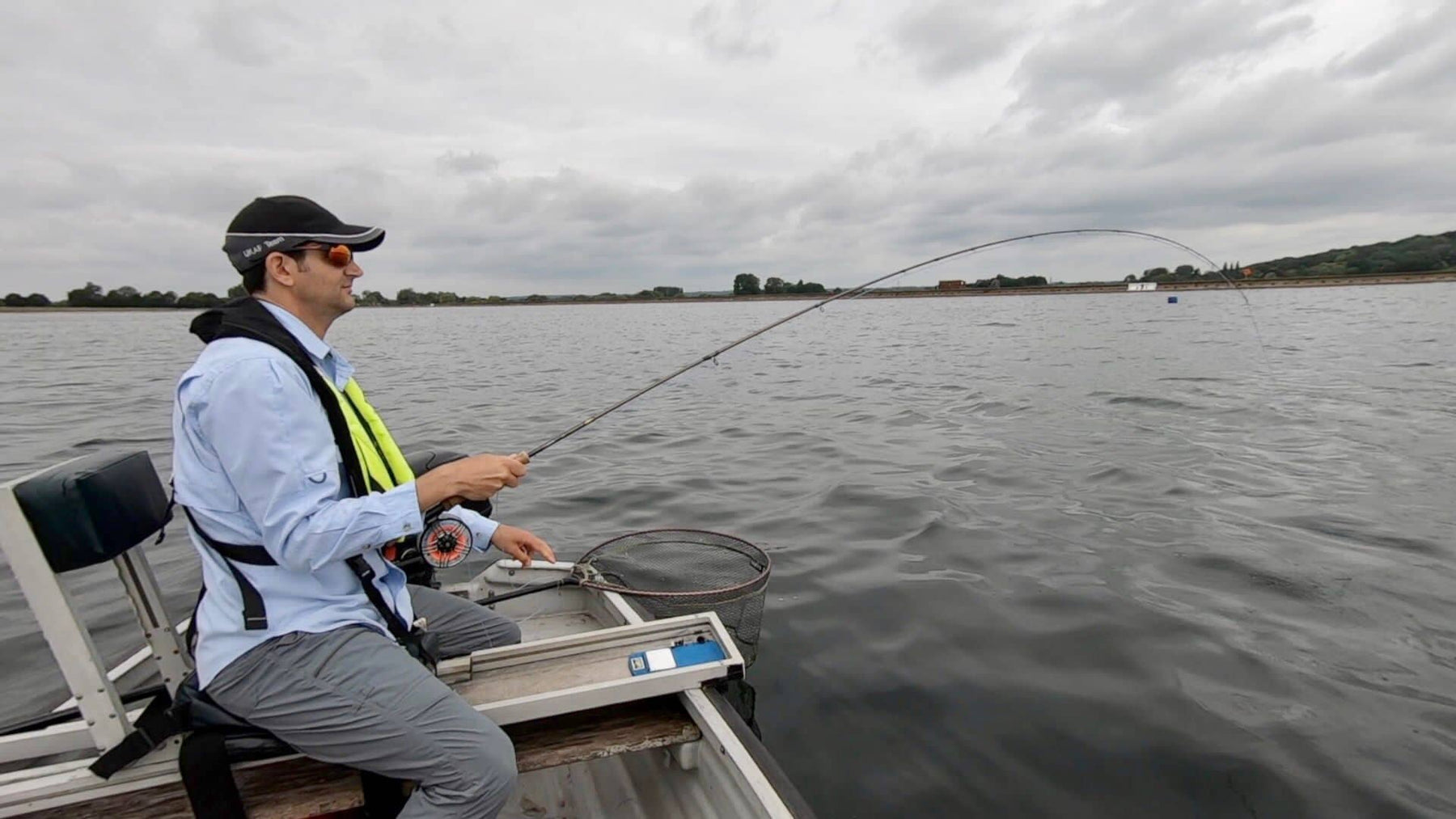
Unveiling the Behavioural Adaptations of Rainbow Trout in Warm Weather - A Guest blog from Lindsay Simpson
Lindsay Simpson is a prolific angler, writer and YouTube creator, please take a moment to view his fly fishing and fly tying content here.
Introduction.
Rainbow Trout (Oncorhynchus mykiss) are well-known for their vibrant colours, remarkable resilience, and ability to thrive in a wide range of habitats. Hence, they are used to stock several of our local fisheries. While typically associated with cold, pristine streams and lakes, rainbow trout also exhibit interesting behavioural adaptations when faced with warm weather conditions. As climate change continues to impact ecosystems worldwide, it becomes crucial to understand how these remarkable fish respond and adapt to rising temperatures. This is especially true if you wish to carry on fishing for them through the high temperatures of Summer. This article delves into the intriguing behaviour of Rainbow Trout in warm weather and sheds light on their remarkable adaptations.

1. Seeking Cooler Water:
Rainbow Trout are cold-water species, and when faced with warm weather, they instinctively seek out cooler environments. In streams or rivers, they may migrate upstream, where the water is often cooler due to springs or shade from vegetation. In Stillwater Lakes, Trout tend to move to deeper water, where the temperature remains relatively stable. Alternatively, they seek out areas with greater water flow, such as inflowing streams or cooler tributaries. Consider carrying a fishing thermometer to test the water conditions before selecting your approach.

2. Altering Feeding Patterns:
Warm weather can significantly influence the feeding patterns of Rainbow Trout. As water temperatures increase, their metabolism accelerates, leading to increased energy requirements. Consequently, Trout become more active feeders, often exhibiting a preference for early morning and late evening feeding. These periods coincide with cooler water temperatures and provide Trout with an opportunity to secure food without expending excessive energy. If possible these two times of the day may well be your best chance to target and catch these fish.

3. Changes in Habitat Selection:
In response to warm weather, Rainbow Trout often modify their habitat preferences. They exhibit a preference for areas with cover, such as undercut banks, submerged logs, or overhanging vegetation, which provide shade and cooler water. Additionally, Trout may concentrate in areas with higher oxygen levels, such as riffles or areas with increased water turbulence, as warmer water tends to hold less dissolved oxygen. On the larger Stillwaters where aerators can be found, we will often find fish gathering in numbers, holding in the oxygen rich water.

4. Vertical Movement:
During warm weather, Rainbow Trout also exhibit vertical movement within the water column. They tend to spend more time at deeper depths, where the water is cooler and oxygen levels are higher. This behavior helps them avoid prolonged exposure to warmer surface waters and optimizes their chances of survival in adverse conditions. Adding fast sinking tip lines and/or fast full sinkers like the Snowbee Buzzer Tip or Cortland Compact Di9 can make all the difference reaching deep lying fish on still waters.
5. Reduced Activity Levels:
While Rainbow Trout may increase their feeding efforts during warm weather, they also tend to reduce their overall activity levels. Higher water temperatures can lead to decreased dissolved oxygen levels, which can impact their metabolic efficiency. To conserve energy, Trout may become less active during the hottest parts of the day and seek refuge in shaded areas or deeper, cooler waters.

Rainbow Trout, renowned for their adaptability, demonstrate a range of behavioural responses when confronted with warm weather conditions. Their ability to seek cooler water, modify feeding patterns, alter habitat preferences, engage in vertical movement, and reduce activity levels highlights their capacity to survive and thrive in changing environments. Understanding these behavioural adaptations is vital for the angler that is prepared to go and give fly fishing a go when most are reaching for a good book.
Lindsay Simpson
Thank you for taking time to read the blog, we really appreciate your thoughts and feedback, so please feel free to drop a comment. If you enjoyed this article please subscribe to our newsletter via the homepage. Use code WELCOME10 at checkout for 10% off your first order with us.

Commentaires
Laisser un commentaire